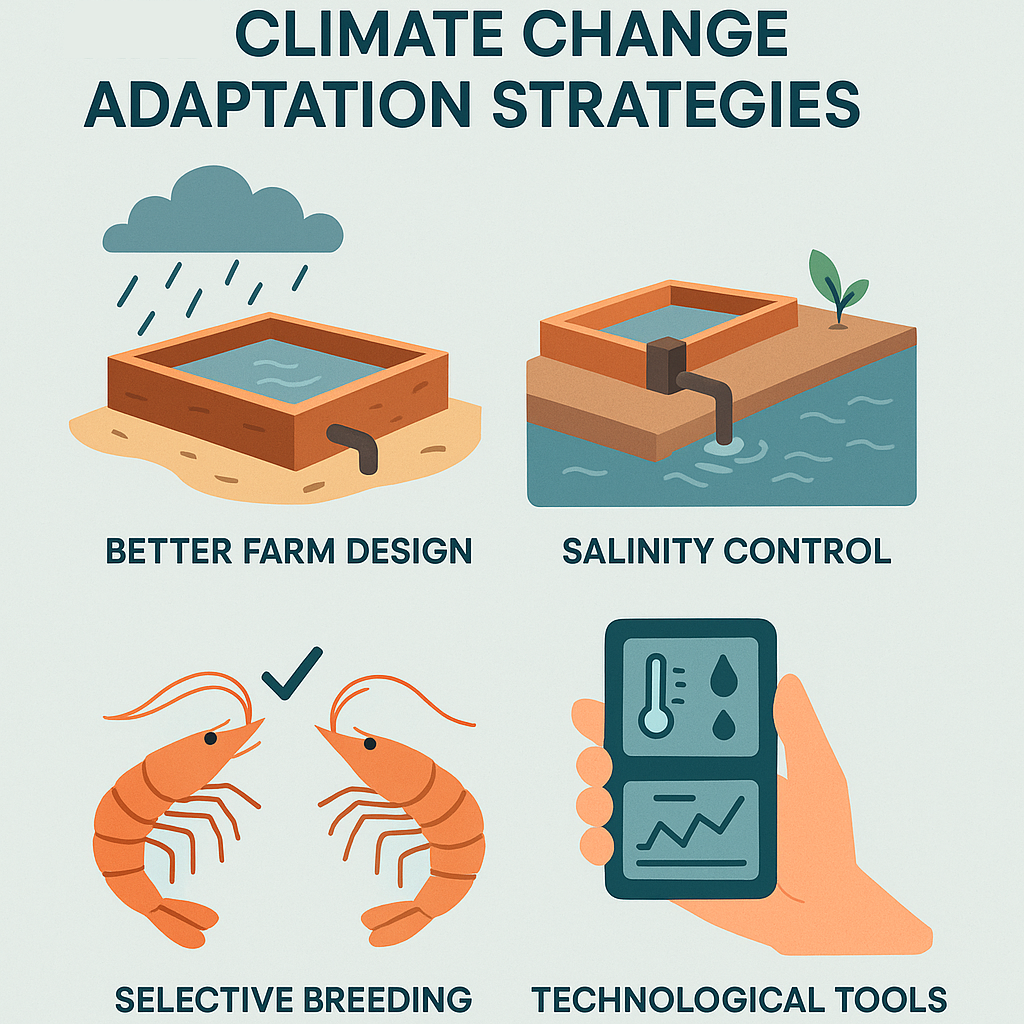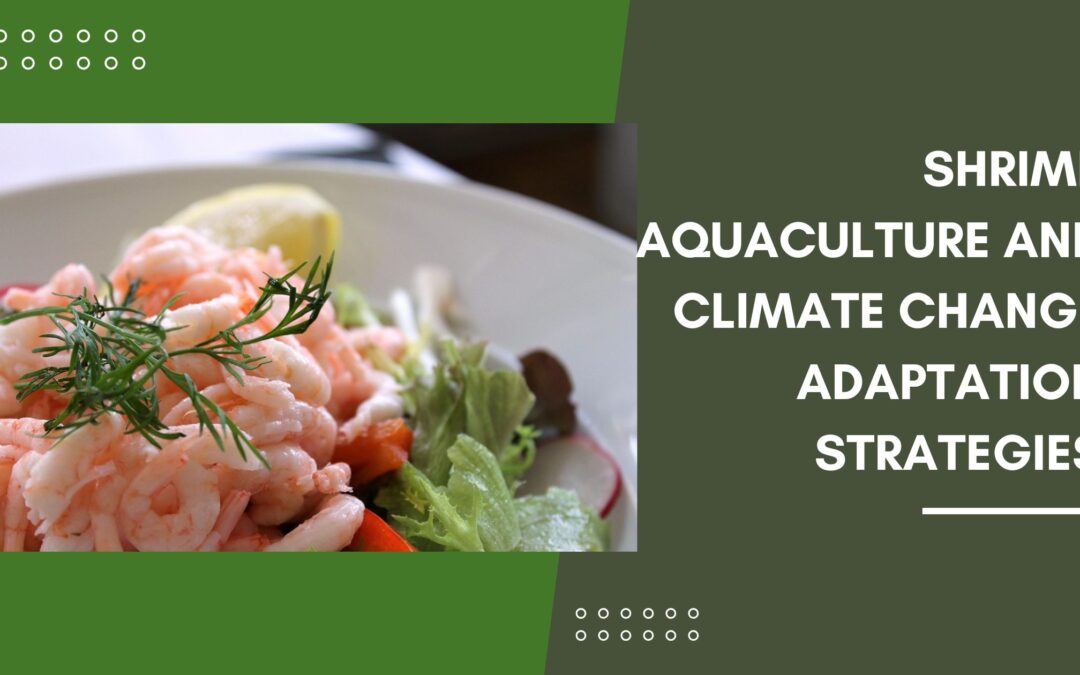Shrimp aquaculture plays a vital role in global seafood production and rural livelihoods, but it faces growing threats from climate change. Rising sea levels, temperature extremes, and unpredictable weather events are disrupting traditional farming practices and putting shrimp health at risk. To ensure long-term sustainability, shrimp farmers are adopting innovative adaptation strategies that build resilience while protecting ecosystems.
The effect of climate change is felt globally, and shrimp farming is one of the industries facing significant challenges. Rising sea levels, altered precipitation patterns, and increasing water temperatures directly impact aquaculture operations. This article explores the strategies shrimp producers are adopting to build resilience and adapt to climate change while ensuring sustainable production.
Climate Change’s Effects on Shrimp Aquaculture
Understanding how climate change affects shrimp aquaculture is essential for developing effective adaptation methods:
- Temperature Extremes – Warmer waters influence shrimp growth rates and increase disease risks. According to the FAO, shrimp are highly sensitive to temperature fluctuations.
- Sea Level Rise – Coastal farms face saltwater intrusion, which can reduce water quality and shrimp survival rates (World Bank).
- Extreme Weather Events – Stronger storms and flooding damage ponds and disrupt farming operations, a challenge noted in the IPCC 2023 report.

Strategies for Adaptation in Shrimp Aquiculture
Shrimp producers are implementing multiple adaptation techniques to reduce risks and ensure sustainability:
- Better Farm Design – Raised pond platforms, reinforced embankments, and advanced drainage systems help withstand floods and storms.
- Salinity Control – Farmers manage saltwater intrusion with barriers, drainage systems, and strategic water management (Aquaculture Stewardship Council).
- Selective Breeding for Disease Resistance – Breeding shrimp that tolerate higher temperatures and resist disease supports long-term resilience (ScienceDirect: Selective Breeding in Aquaculture).
- Technological Tools – Real-time monitoring systems and early-warning tools provide critical insights into temperature shifts, disease threats, and water quality (NOAA Climate Data).
- Sustainable Land Use – Protecting mangroves and applying eco-friendly land management reduces environmental impact while boosting climate resilience (IUCN Mangrove Conservation).
Collaborative Research and Knowledge Exchange
Adaptation is strengthened through collaboration between researchers, governments, and shrimp farmers. Sharing best practices, advancing selective breeding, and testing innovative farm designs through global partnerships ensures shrimp aquaculture adapts to diverse climate challenges.
Be Part of the Solution for Sustainable Shrimp Aquaculture
Shrimp aquaculture can thrive in a changing climate if farmers, researchers, and communities work together. You can:
- Support sustainable seafood certification programs like the Aquaculture Stewardship Council.
- Learn more about climate-resilient aquaculture from the FAO Fisheries and Aquaculture Division.
- Join conversations and explore resources at EAT Community.
Together, we can ensure shrimp aquaculture remains a viable source of food and livelihood while protecting ecosystems for generations to come.
References & Related Articles
- Enhancing Fish Production: Mitigating Climate Change Effects in Aquaculture
- Advanced Freshwater Shrimp Aquaculture Techniques to Adopt
- FAO. (2022). Aquaculture and Climate Change.
- IPCC. (2023). Climate Change 2023: Impacts, Adaptation, and Vulnerability. IPCC Report.
- World Bank. (2021). Aquaculture and Climate Change.
- IUCN. (2020). Mangrove Conservation and Climate Adaptation.
- Aquaculture Stewardship Council. (2023). Sustainable Shrimp Standards.
- ScienceDirect. (2014). Selective Breeding in Aquaculture.
- NOAA Climate Data. (2023). Climate Monitoring Tools.




